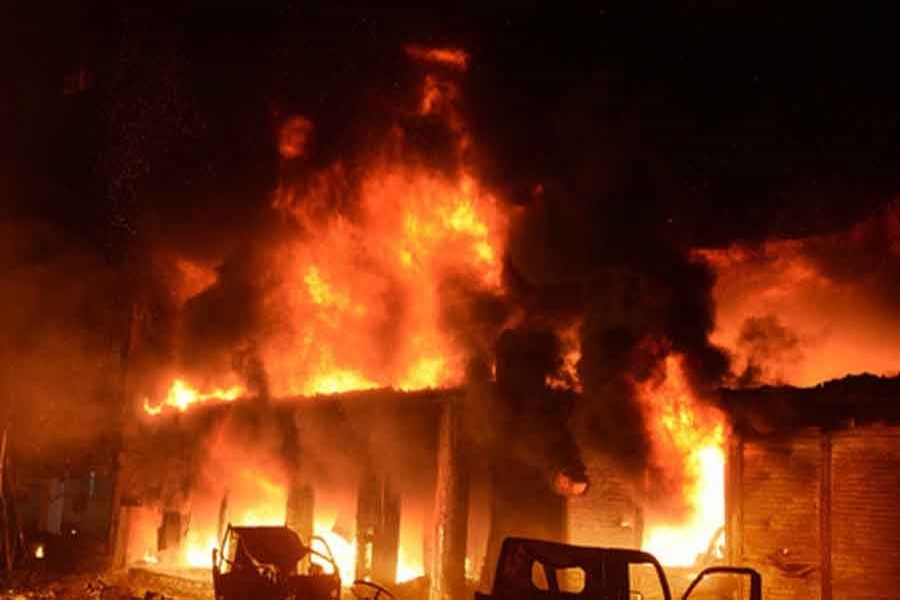
Published :
Updated :

While lots of survivors of the 2010 Nimtoli fire still feel haunted by the nightmare, the charred Chawkbazar neighbourhoods reek of human flesh burnt out in the February 20 chemical-induced blaze. Given the Dhaka residents' compulsive trend in repeating their lapses, the latest tragedy appears to have been par for the course for them. But notwithstanding the tragic elements in the two fires, most of the Dhaka-dwellers remain oblivious to the ever looming fire calamities in a broader cityscape. This may cause distress to many. The blazes being still largely confined to the older Dhaka, people in other parts of the city somehow muster a hollow satisfaction -- the flames of killer fires cannot reach them; or that they are out of the reach of fire hazards. But the ground reality sees things in a different and dispassionate way. According to different surveys and studies, the country's capital is highly vulnerable to fire calamities. Doomsayers may find the city sitting on a powder keg. According to many others, compared to the magnitude of the terrible fire-related risks posed to the greater Dhaka, the blazes in the two chemical hubs are relatively minor.
Few of the city residents living in high-rise buildings are aware of the precarious state in which they have encaged themselves. While being constructed, most of the owners and tenants of these condominiums have not bothered to keep in mind the imperative of putting in place fire-safety measures. In the last couple of years, studies have revealed that 95 per cent of Dhaka's apartments and other similar structures have no fire exits. Unlike the modern cities in other countries, 99 per cent of these structures have not taken part in any fire drills since their opening, and 70 per cent of the people using these buildings, as residential places or shopping complexes, have no idea of survival techniques during a blaze. The residents of the capital have long been used to vast slum or ready-made garment (RMG) conflagrations. The spectre of full-scale fire outbreak in multi-storey apartments or offices or business centres finds itself being largely overlooked. Here lies the danger. That ignorance and the tendency to downplay the possibilities of hazards can lead to massive disasters eludes even many otherwise sensible people.
The vulnerability of Dhaka's middle-class neighbourhoods to fire stems mainly from the high-rise buildings' construction precariously close to each other. In spite the city development authorities' provision for builders to keep certain distance between the structures, it is hardly followed. Buildings contiguous with each other are common scenario in Old Dhaka. This increases the risk of the fast spread of fire. Except the exclusive and posh residential areas, the densely constructed buildings in Dhaka's other parts speak of its brazenly unplanned growth. Few of these buildings have provisions for fighting big fires.
The Bangladesh National Building Code requires high-rise structures to be equipped with sufficient fire extinguishers, emergency exits, fire lifts, fire alarm systems, along with reservoirs, which are among some of the imperatives for a fire-proof building. Moreover, narrow roads inaccessible to fire fighting tank-lorries add to the fire devastations. This drawback may turn terrible during big earthquakes. To call Dhaka an unplanned city in the context of fire incidents is an understatement. Problems of this city are seemingly hydra-headed. Fires only increase the list of Dhaka's many notorieties. Dying like insects in a blaze is an abhorrent proposition. Surviving disasters heroically is the fulcrum of urban wisdom. Hopefully, it hasn't eluded Dhaka.


 For all latest news, follow The Financial Express Google News channel.
For all latest news, follow The Financial Express Google News channel.